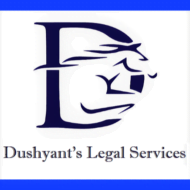Introduction
Running a successful law firm requires meticulous management of various processes. Streamlining these operations can lead to enhanced efficiency, improved client satisfaction, and reduced operational costs. This article delves into the critical aspects of process audit, documentation, implementation, and automation, providing a comprehensive guide to optimizing your law firm’s workflow.
Types of Process
Process Audit

A process audit is the first step in identifying inefficiencies and areas for improvement within your law firm’s operations. It involves a thorough examination of existing workflows, procedures, and practices to ensure they are effective and compliant with regulatory standards.
- Identify Key Processes : Begin by listing all the critical processes within your firm, such as client intake, case management, billing, and document management.
- Evaluate Current Procedures: Assess the efficiency and effectiveness of each process. Conduct interviews with staff, review documentation, and observe workflows in action.
- Identify Bottlenecks and Inefficiencies: Look for areas where delays, errors, or redundancies occur. Identify the root causes of these issues, whether they stem from outdated technology, lack of training, or unclear procedures.
Process Documentation

Once the process audit is complete, the next step is to document the findings and create standardized procedures. Process documentation provides a clear, written guide that employees can refer to, ensuring consistency and reducing the risk of errors.
- Create Process Maps:
- Develop visual representations of your workflows. Use flowcharts or diagrams to map out each step in the process, highlighting decision points and responsibilities.
- Develop Standard Operating Procedures (SOPs)
- Write detailed SOPs for each key process. Include step-by-step instructions, required forms, and responsible personnel. Ensure the language is clear and concise.
- Incorporate Best Practices
- Integrate industry best practices and lessons learned from the audit into your documentation. This can help improve efficiency and reduce the likelihood of mistakes.
- Review and Update Regularly
- Regularly review and update your documentation to reflect changes in procedures, technology, or regulations. Encourage staff to provide feedback for continuous improvement.
Process Implementation
With the documentation in place, the next step is to implement the standardized processes across your law firm. Effective implementation ensures that the documented procedures are followed consistently.
- Training and Onboarding
- Conduct training sessions for employees to familiarize them with the new procedures. Provide hands-on training and resources to support their learning.
- Assign Roles and Responsibilities
- Clearly define roles and responsibilities for each process. Ensure that employees understand their tasks and how they contribute to the overall workflow.
- Monitor Compliance
- Implement a system for monitoring compliance with the new procedures. Conduct regular audits and provide feedback to ensure adherence.
Process Automation

Automation is the final step in streamlining law firm operations. By leveraging technology, you can automate repetitive tasks, reduce manual errors, and free up staff to focus on higher-value activities.
- Identify Automation Opportunities
- Look for tasks that are repetitive, time-consuming, and prone to errors. Common areas for automation include document generation, billing, and client communication.
- Select the Right Tools
- Choose automation tools that integrate seamlessly with your existing systems. Popular options for law firms include practice management software, document management systems, and automated billing solutions.
- Implement Automation
- Roll out the selected automation tools in phases. Start with the most critical processes and gradually expand to other areas. Ensure that staff are trained on how to use the new tools effectively.
- Monitor and Optimize
- Continuously monitor the performance of automated processes. Collect data on efficiency gains and identify areas for further optimization. Regularly update the tools to leverage new features and improvements.
Conclusion
In this dynamic legal landscape, the process is more than a luxury; it’s a requirement. At Dushyant’s Legal Services, we provide personalised solutions and help firms or paralegals in their processes.

